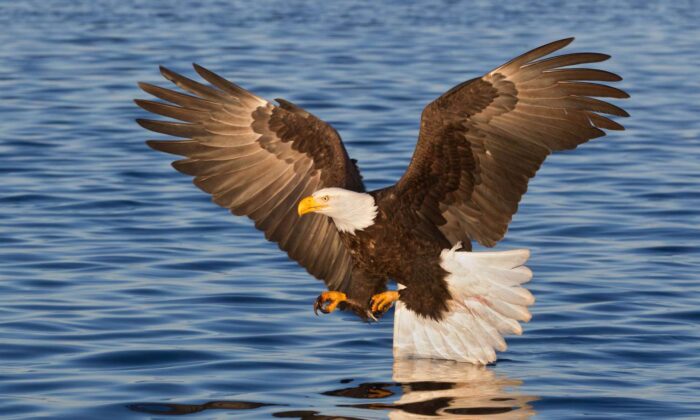In North America, the bald eagle (Haliaeetus leucocephalus) is among the most recognisable bird species. The bald eagle faced extinction in the middle of the 20th century as a result of habitat loss, chemical poisoning, and shooting. However, conservation efforts have greatly increased the eagle population. But in order to successfully breed these magnificent raptors, both in captivity and in the wild, meticulous preparation and adherence to precise procedures are needed. We’ll go over the crucial procedures for breeding bald eagles in Captivity and the Wild, which will throw light on the difficult task of protecting and extending the range of this amazing bird. In this article we talk about the key steps in breeding bald eagles in captivity and in the wild.
Bald Eagle Breeding in Captivity
Bald eagle populations have rebounded thanks in large part to captive breeding initiatives. In these programmes, eagles are bred in regulated settings including zoos, wildlife rehabilitation institutions, and specialised breeding facilities. The following are crucial actions in raising bald eagles in captivity:
1. Pairing and Establishing Relationships
Selecting appropriate breeding partners is the first stage in the breeding of bald eagles in captivity. Bald eagles establish monogamous relationships, and the process of matching might be difficult. When choosing mates, variables including temperament, genetics, and age are taken into consideration. The eagles are given time in the captive facility to bond and mark their territory after they are mated.
2. Nest-Building Get Ready
Large, robust nests are constructed by bald eagles, usually in towering trees or on cliff ledges. To replicate their native breeding habitat, artificial nest structures or platforms are given for them while they are in captivity. To promote nesting behaviour, these buildings are made to be roomy, safe, and lined with soft materials like grass, moss, and down feathers.
3. Management of Incubation and Eggs
The incubation period starts as soon as the female bald eagle deposits her eggs, which usually number one to three each clutch. The process of incubation the eggs, which can take up to 35 days, is shared by the male and female. Eggs may be closely watched in captive breeding programmes, and special methods such as artificial incubation or egg candling—which involves examining the egg’s contents with a bright light—may be used to guarantee the best possible development.
4. The Care and Feeding of Chicks
The chicks, also called eaglets, need to be cared for by their parents nonstop for a few weeks after they hatch. In captivity, eagle caretakers may feed their charges extra fish that has recently been caught or customised diets. The well-being of the eaglets is ensured by regularly monitoring their development and providing any necessary treatments, such as hand-rearing or veterinary care.
5. Escape and Release (or Assimilation into the Incarcerated Group)
The eaglets will eventually fledge—take their first flight—from the nest as they grow stronger and more mature. Certain fledglings in captive breeding programmes may go through a rigorous rehabilitation and preparation process before being released into the wild. To maintain the genetic diversity of the programme, others might be incorporated into the captive breeding population.
Bald Eagle Breeding in the Wild
Bald eagle populations have recovered thanks in large part to captive breeding programmes, but measures to maintain and safeguard wild breeding populations are just as important. The following are the essential procedures for raising bald eagles in the wild:
1. Protection and Conservation of Habitats
Bald eagle reproduction in the wild depends on the availability of adequate food and nesting sites. In order to allow eagles to develop their territories and locate an abundance of prey, it is necessary to preserve and maintain marshes, coastal regions, rivers, and substantial sections of old woods.
2. Protection and Monitoring of Nests
Because bald eagles are vulnerable to disruptions during the mating season, wildlife biologists and environmentalists keep a close eye on and safeguard their nests. To reduce human intervention, buffer zones and nest sites are determined. Tracking the wellbeing and output of breeding pairs is another benefit of monitoring activities.
3. Reducing Hazards and Disruptions
Bald eagle mating success can be adversely affected by a number of problems, including habitat deterioration, illicit hunting, lead poisoning, and interruptions from human activities (such as development, noise, and recreational activities). To reduce these risks, mitigation measures include putting laws into place, organising public awareness campaigns, and focusing conservation efforts.
4. Encouraging Nutrition and Safeguarding Nature’s Bounty
Conservationists may gently boost existing environmental provisions to bolster eagles raising young where resources run scarce. Such assistance could involve erecting nesting platforms in appropriate spots or nurturing waters rich with fish. These mindful habitat enhancements give established pairs a respite rather than replacing self-directed parenting outright. The goal remains upholding nature’s rhythm.
5. Tracking Populations to Inform Coexistence
Scientists also monitor eagle movements and breeding patterns to better grasp how we all might thrive together. By thoughtfully banding young eagles for long-term data gathering, biologists gain insights on migration habits, survival trends and reproductive success over generations. This helps illuminate sustainable support strategies for the years ahead. We honor these winged teachers by heeding their lived wisdom.
In Summary
Through combined captive and conservation approaches, the iconic bald eagle has rebounded resiliently since its endangered era. As recovery continues evolving, proactive initiatives upholding ethical practices can aid their flourishing further. But in the end, we must accept bald eagles’ wild autonomy with good faith stewardship. By reexamining our own assumptions and policies through eagles’ eyes, a deeper path to coexistence reveals itself – one guided by cooperation, compassion and care for the interconnected whole under nature’s wing. I hope this What Are the Key Steps in Breeding Bald Eagles in Captivity and the Wild article helps you.

